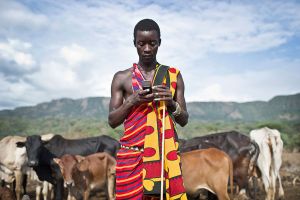This report examines implications of increasingly influential roles of global business, agricultural research, and the limited national research capacity of developing countries.
Introduction
The Chicago Council on Global Affairs report, Agricultural Innovation: The United States in a Changing Global Reality, examines the implications of the increasingly influential roles of global business, Brazil, China, and India in agricultural research and the limited national research capacity of developing countries. Authored by University of Minnesota researchers, Philip G. Pardey and Jason M. Beddow, the report makes the case that greater international collaboration and investment in research is needed to safeguard productivity gains made over the past half century and meet future food demand. The report concludes that most Sub-Saharan African countries could potentially tap at least 15 times (and, on average, nearly 600 times) their locally produced agricultural knowledge by adapting and adopting innovations produced in other countries.
Key Findings
Pardey and Beddow present new measures of accumulated knowledge stocks by country and the potential for this knowledge to “spill over” and benefit other countries. These new measures of global spillover potential can help guide research and development decisions in the United States and globally. The study takes into account that the global agriculture and food system will be asked to increase production by 60 percent by 2050. It acknowledges that research and development will play a critical role in meeting this challenge given that production increases will occur in the face of rising temperatures, resource scarcity, and the increased frequency of extreme climatic events.
New measures for global spillover potential presented in the report include:
- Technological distances—identifying similarities among countries in their agro ecologies and patterns of agricultural production
- Cumulative home-grown stocks of agricultural knowledge, by country and region
- Spill-in ratios—the total amount of knowledge (measured in dollars of research investment) that could spill-in relative to each country’s own stock of knowledge
The following datasets contributed to this analysis:
- Country level investments in public agricultural R&D worldwide, 1960-2009
- Public and private investments in food and agricultural R&D for the U.S. and other OECD countries, 2009
- Investments in international agricultural research, 1972-2010
- Global spending on all areas of science, 2009 (looking beyond just agricultural R&D to other sciences, in recognition that there are spillovers from other types of R&D investments)
